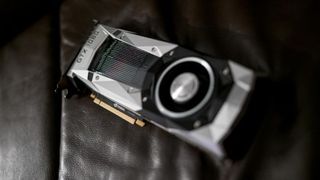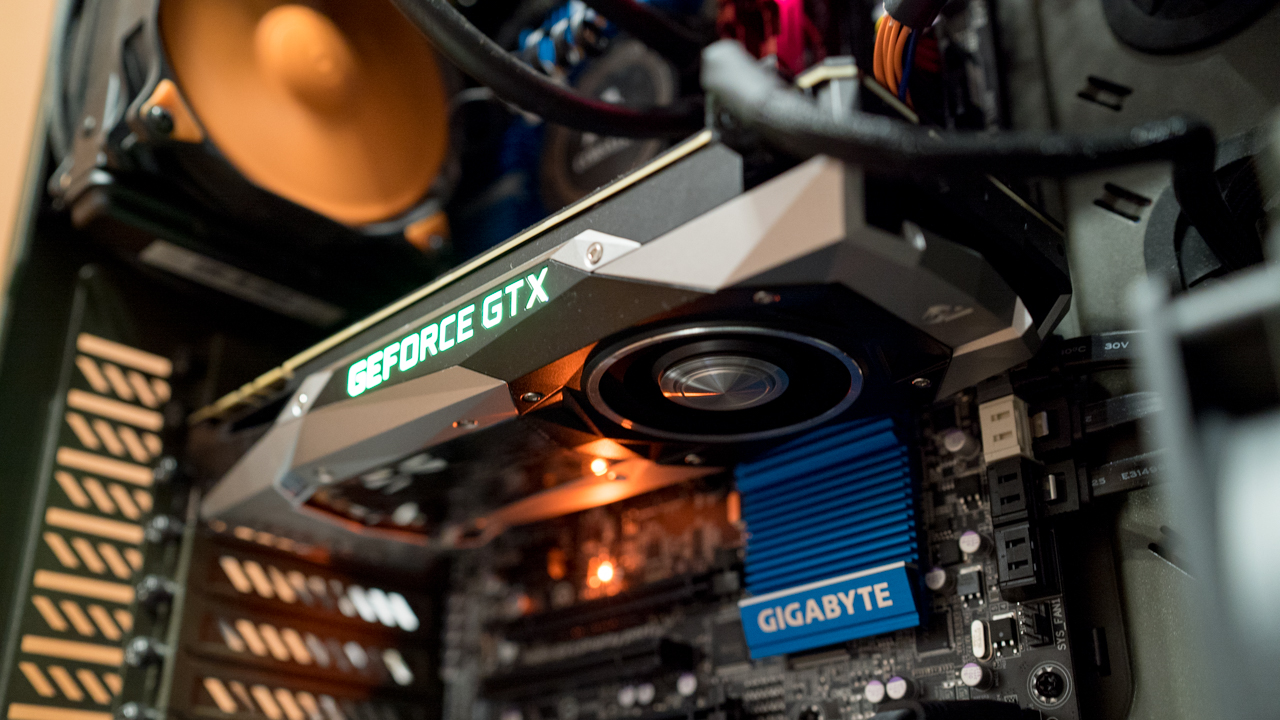TechRadar Verdict
The Nvidia GTX 1080 offers exceptional graphics performance, rocketing straight to the top of the single GPU world. If you're looking to game at 4K or higher refresh rates this card is an excellent choice. Yet the price of the Founder's Edition just doesn't sit well with us.
Pros
- +
Great all round performance
- +
Makes 4K gaming viable
- +
Classy design
- +
Quiet Cooler
Cons
- -
Expensive launch price
- -
Aftermarket cards will be better specced for less
Why you can trust TechRadar
Nvidia’s Pascal GPU architecture was at the top of every PC enthusiast’s component wish list for a year before the Nvidia GeForce GTX 1080 even came out. And, with good reason – it was the first time we’d ever seen a manufacturing process smaller than 28nm.
Nvidia expands GTX 16-Series with new mobile graphics and desktop GTX 1650
An Nvidia GPU benchmark leak suggests an RTX 2070 Ti, but the details are odd
Almost as small as the 14nm Intel Skylake Processors (and the three preceding and succeeding generations), Pascal brought the new 15nm FinFet process to the best graphics cards in the mainstream. And, that’s how the Nvidia GTX 1080 came with more transistors, faster performance and better efficiency. This allowed gamers to enjoy the best PC games at higher frame rates, resolutions, and made for a better VR experience than was previously possible.
And, while it’s been succeeded by the Turing-based Nvidia GeForce RTX 2080, the GTX 1080 is still absolutely worth your time.

Design and cooling
The Nvidia GeForce GTX 1080 doesn’t run quite as cool as some of the GTX 980s we’ve seen in the past, but it still sits firmly at 82 degrees C, or 91 if you pump up the power limit and let GPU Boost have that extra thermal headroom. You don’t need to worry about overheating.
What’s interesting about this card in particular, is the DisplayPort 1.4 connection standard. When it comes to 4K gaming especially, the lack of higher refresh rate monitors is a huge limiting factor. This is because DisplayPort 1.2 is limited to pumping out 4K at 60 Hz, meaning the buttery smoothness of 144Hz gaming panels has been unobtainable on higher pixel density screens.
Although there's no 4K 120Hz panels out on the market just yet, Nvidia claims two 1080's in SLI will be able to push 4K resolutions at 144Hz. DisplayPort 1.4 also supports resolutions as high as 8K (7680x4320) at 60 Hz with HDR, or 4K at 120Hz with HDR.

Power up
And, the Nvidia GeForce GTX 1080 has the horsepower to handle those ports. Coming jam packed with 2,560 CUDA cores, 160 texture units, 64 ROPs, 8GBs of Micron's latest GDDR5X VRAM, and a GPU boost clock running in at a comfortable 1,733 MHz, is there any wonder why the PC enthusiast community is so abuzz?
For those less savvy with the technical jargon, the best way to compare these cards is simply by looking at how many TFLOPs they can produce. The GTX 980, manages a respectable 5.5 TFLOPs, the 980 Ti, 6.5, the Titan 7.
And the GTX 1080? 9 teraflops.
Yep, in essence it should be almost twice as powerful as its predecessor, and in nearly every scenario, it is. At least in our testing. So let's get to it.

Zak is one of TechRadar's multi-faceted freelance tech journalists. He's written for an absolute plethora of tech publications over the years and has worked for Techradar on and off since 2015. Most famously, Zak led Maximum PC as its Editor-in-Chief from 2020 through to the end of 2021, having worked his way up from Staff Writer. Zak currently writes for Maximum PC, TechRadar, PCGamesN, and Trusted Reviews. He also had a stint working as Corsair's Public Relations Specialist in the UK, which has given him a particularly good insight into the inner workings of larger companies in the industry. He left in 2023, coming back to journalism once more. When he's not building PCs, reviewing hardware, or gaming, you can often find Zak working at his local coffee shop as First Barista, or out in the Wye Valley shooting American Flat Bows.
